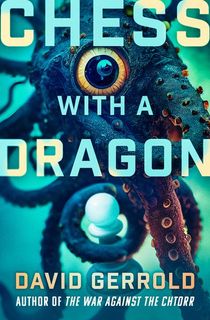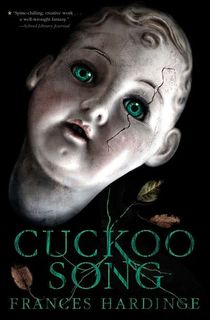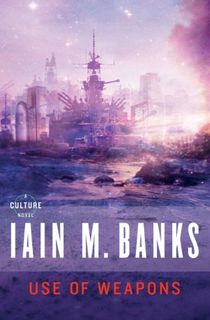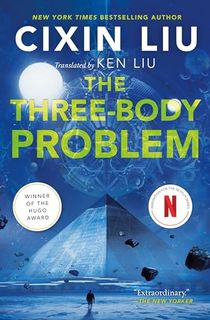There’s something incredibly satisfying about reading a SFF book that ends not on a cliffhanger but with such a mind-bending plot twist that it makes you go, “Whoaaah!” Indeed, a great twisty ending can be difficult to pull off. But if done well, it can make the reader go back and reread the book, or consider the fictional events in a whole new light, making for an extremely rewarding reading experience.
So, if you’re in the mood for speculative titles that will bamboozle your mind and make you go online later to find out WTF just happened in the last few pages, we’ve got you covered with spoiler-free recommendations of the best twists and turns!
Our Favorite Twists in SFF

Fire and Hemlock
Diana Wynne Jones was a master storyteller and Fire and Hemlock is probably one of her best and most underrated works. On the surface, it seems to tell a straight-forward coming-of-age tale about Polly, a young girl whose parents are divorced. But there’s also her love for books, playing pretend and making up stories, and her problematic friendship with an older man who seems to be enslaved by the Fairy Queen.
Even though I’ve read the book at least nine or ten times and analyzed every fan theory online, I still don’t understand what exactly happened in the ending, but I still think it was pretty spectacular.

Chess with a Dragon
At a little over 160 pages, Chess With a Dragon is a highly unique and thought-provoking sci-fi read by a writer famous for his work on a classic Star Trek episode. The title is kind of a deliberate misnomer, and the book tells the story of aliens and galactic societies who perceive humans as little more than laughing stocks, ready to be tricked and enslaved. But the plot and structure get weirder and more confusing, and to describe it further would ruin the surprise. It’s definitely a one-of-a-kind work!

Kafka on the Shore
Murakami’s writings bristle with a quiet magical realism, and in Kafka on the Shore, he turns the post-modernism up a notch by presenting the plot almost like a puzzle to be solved. There are two inter-related plotlines—on one hand, we have Kafka, a young boy runs away from his father’s home in a quest to find his mother and sister and escape a curse, while on the other, there’s Nakata, an old, disabled man who can talk to cats. Packed with surreal elements, a lot is left unexplained in the book, with Murakami trusting readers to connect the dots and make up their minds about the open ending.

Cuckoo Song
Frances Hardinge’s Cuckoo Song is a darkly delightful YA novel, involving a young girl’s brush with the fey, set in the early 1920s. The story begins with our protagonist Triss healing after a terrible accident, insatiably hungry and not quite fitting in the real world. Utterly creepy, mysterious and macabre, Cuckoo Song is reminiscent of dark fairytales like Neil Gaiman’s Coraline but also original and twisty in the best way.

House of Leaves
If you’re looking for something more than just a crazy twist ending, such as an entirely crazy twisty reading experience, you need a physical copy of Mark Z. Danielewski’s House of Leaves, described as a both a horror novel and a love story. Instead of a typical linear story, we have copious footnotes within footnotes, layering up to create a stunning example of metafiction, epistolary narratives, and ergodic literature.

The Fifth Season
The Fifth Season, the first in a trilogy, is a brilliant read, unfolding atop a supercontinent called the Stillness, ravaged by frequent earthquakes and climate upheavals. Unlike most books that adopt a first or third-person point-of-view to tell the story, The Fifth Season is narrated entirely in the second-person, which not only builds up to a crazy twist revealed only at the end of the trilogy, but also creates a sense of personal immediacy, as it directly addresses the reader.

Use of Weapons (A Culture Novel Book 3)
Published in 1990, Iain M Banks’ Use of Weapons juggles two narrative threads in its alternating chapters and is perfect for fans of science fiction. Deeply layered, the book skillfully explores the mythos of the Culture, already introduced in his earlier books, surprising and satisfying the reader in the best ways. It’s hard to go into the details of the story without giving away spoilers, but rest assured that you’ll want to reread this book at least a couple of times to pick on the subtle nuances and make sense of the killer ending.

The Three-Body Problem
The intricate plot of The Three-Body-Problem by Liu Cixin unfolds partly in the backdrop of China’s cultural revolution. The story deftly plays around with ideas from astrophysics, string theory, religion, nanoscience, evolution and more, as it follows Ye Wenije, an astrophysicist conscripted to work on a secret military project that involves making contact with extraterrestrials. Even so, an alien attack is just on the horizon, with Earth being divided into several factions, some of whom want to help the aliens take over the planet, while others are determined to defend humanity at all costs.
Already adapted to a successful Netflix series, Cixin’s The Three-Body-Problem is an intense and electrifying read, with unexpected plot twists and a memorable ending.






